A Deep Dive into Corporate Wellness Software Development: Why, How, Experts’ Insights

The need to address the physical, mental, and emotional health of employees in a world grappling with the ongoing global health crisis, mounting stress levels, and blurred boundaries between work and personal life has become a paramount priority.
Organizations increasingly recognize that fostering a culture of well-being is not just a moral obligation but also a strategic imperative. Consequently, the demand for innovative solutions to address these pain points and navigate the complexities of modern work environments has surged. Thus, the corporate wellness software market Is expected to reach $1043.1 million by 2033.
In this article, drawing from our practical experience, we’ll explore why modern companies are turning to corporate wellness software development, illuminating the challenges they address and the benefits they bring. Moreover, we’ll pinpoint the essential features of employee wellness software and examine the critical aspect of development cost.
By the end, you’ll be well-equipped to make informed decisions about implementing corporate wellness software in your organization.
Table of contents
- Maximizing Employee Well-Being: The Advantages of Wellness Tracking Software
- Building a Feature-Rich Corporate Wellness Software: Functionality You Should Include
- How to Develop an Employee Wellness App: Best Practices and Alternative Spaces Recommendations
- How Much Does it Cost to Develop a Corporate Wellness App?
- How to Monetize Your Corporate Wellness Software
- Summing up
- FAQ
Maximizing Employee Well-Being: The Advantages of Wellness Tracking Software
Corporate wellness apps have emerged as powerful tools for employees and employers, offering many benefits that contribute to a healthier and more productive workplace. Let’s delve into the details of employee wellness tracking software benefits:
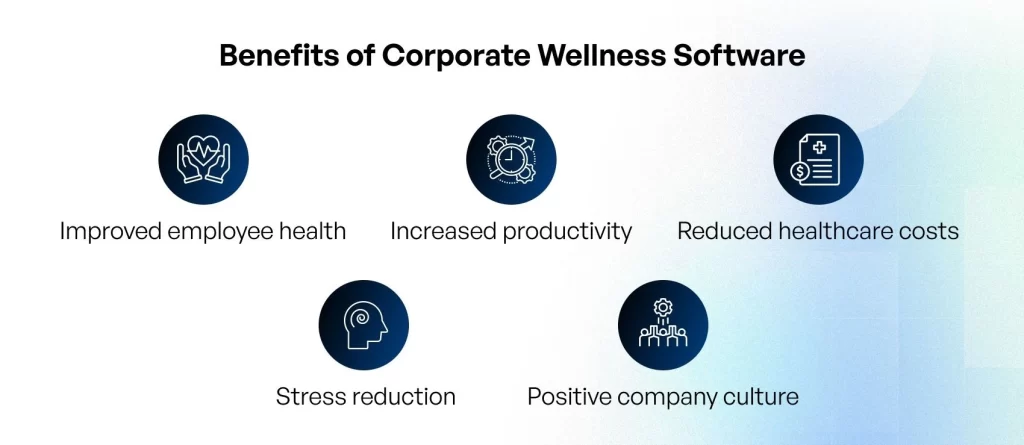
Improved employee health
Corporate wellness apps provide a comprehensive range of tools and resources to support employees in pursuing better health. By actively engaging in healthier practices, employees experience improved physical and mental well-being, reducing the risk of chronic diseases and leading to a healthier, more energetic workforce.
Increased productivity
Healthier employees are mainly more productive. They experience increased energy levels, reduced fatigue, and better focus, leading to heightened job performance and efficiency. Organizations implementing workplace wellness programs have experienced a notable surge in productivity, with reports indicating a substantial 66% improvement.
Reduced healthcare costs
One of the most significant employee wellness tracking software benefits is the potential for cost savings. As employees adopt healthier lifestyles and engage in preventive health measures, the burden on healthcare services is reduced. This results in decreased healthcare costs for both employees and employers, making wellness apps a cost-effective investment.
Stress reduction
Workplace stress is a significant contributor to employee burnout. Corporate wellness apps often include stress management tools, such as mindfulness exercises and stress-reduction techniques. By addressing stress, these apps help employees maintain a better work-life balance, leading to reduced absenteeism and improved job satisfaction.
Positive company culture
Wellness apps empower employees to take charge of their physical and mental health by offering a comprehensive suite of tools and resources. Engaging features like challenges and gamification not only promote active participation but also foster a sense of camaraderie among team members. Beyond the individual benefits, wellness programs address overarching organizational goals by contributing to increased productivity, reduced absenteeism, and a more energized workforce.
Incorporating corporate wellness apps into the workplace is not merely a trend. It’s a strategic move that benefits both employees and the organization. These apps empower individuals to take control of their health, and in doing so, they contribute to a healthier, happier, and more productive workforce.
Building a Feature-Rich Corporate Wellness Software: Functionality You Should Include
Corporate wellness software development typically encompasses a range of features designed to support and enhance the well-being of employees within an organization. These features are tailored to address various aspects of health, fitness, and overall wellness.
When developing corporate wellness software, it’s essential to prioritize features that serve the core purpose of promoting employee well-being, engagement, and data-driven decision-making. Features can be divided into “must-have” and “additional” categories to ensure a comprehensive and functional application.
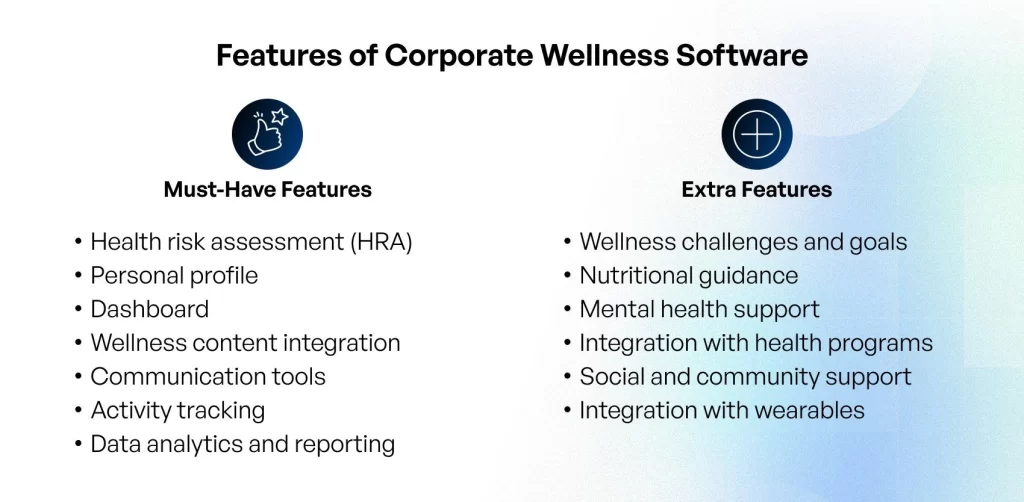
Must-Have Features of Corporate Wellness Software
- Health risk assessment (HRA). Corporate wellness software often begins with an HRA, where employees answer questions about their health, lifestyle, and habits. The software then assesses these responses to provide a personalized health profile, highlighting areas that may require attention.
- Personal profile. Users should have the ability to create and manage personal profiles. This includes setting wellness goals, tracking progress, and updating their health information. Customization is critical to making the wellness experience personalized.
- Dashboard. An intuitive and user-friendly dashboard is essential. It should give employees an overview of their wellness progress, goals, and relevant data, helping them stay engaged and informed.
- Wellness content integration. Integrating various wellness content, such as articles, videos, and resources on topics like nutrition, exercise, mental health, and stress management, empowers users with educational materials.
- Communication tools. Features like in-app messaging, notifications, and announcements are crucial for informing employees about wellness programs, challenges, and updates. Practical communication tools enhance engagement.
- Activity tracking. This feature allows employees to record and monitor their physical activity, whether it’s steps, workouts, or other fitness metrics.
- Data analytics and reporting. Provide employers and HR managers with data analytics and reporting tools to assess the impact of wellness programs, identify trends, and make informed decisions.
Additional Features of Corporate Wellness Software
- Wellness challenges and goals. Implement gamification features for creating and participating in wellness challenges and goals, fostering engagement and motivation.
- Nutritional guidance. Incorporate features for tracking food intake, calories, and macronutrients. Include access to healthy recipes and meal planning options.
- Mental health support. As our lifestyle becomes increasingly fast-paced and stressful, public awareness of mental health increases worldwide so does the use of specialized applications.
The global mental health apps market size, estimated at $5.19 billion in 2022, is expected to expand at a CAGR of 17.7% and approach $26.4 billion by 2032.

Prioritize mental health resources, offering mindfulness exercises, stress management techniques, and access to mental health professionals.
- Integration with health programs. Integrate with other health programs, like smoking cessation or weight loss initiatives, to provide a more holistic approach to well-being.
- Social and community support. Create a sense of community by allowing users to connect with colleagues, share progress, and offer mutual support, enhancing motivation.
- Integration with wearables. Integrating with popular fitness wearables, such as Fitbit or Apple Watch, facilitates data synchronization and offers a holistic view of users’ health and fitness metrics.
As you can see in the graphic below, the wearable market is growing steadily yearly, making this technology a number one trend.
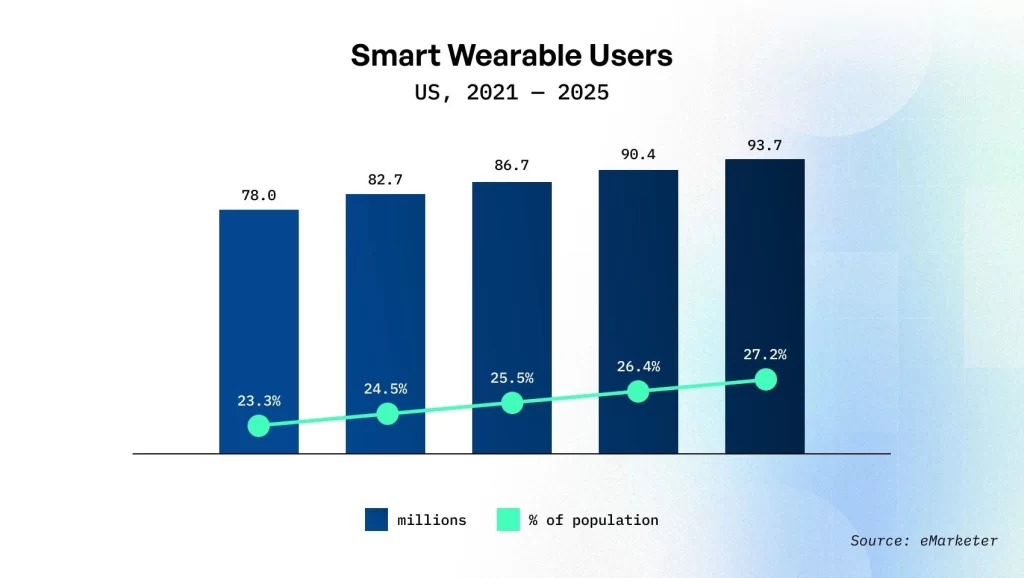
The combination of these must-haves and additional features will result in a comprehensive corporate wellness software solution that not only promotes employee well-being but also supports employers in their efforts to create a healthier and more engaged workforce.
How to Develop an Employee Wellness App: Best Practices and Alternative Spaces Recommendations
Employee wellness software development is a multifaceted process that involves careful planning, development, and testing. Here are the best practices and steps to consider before starting corporate wellness app development:
Define your objectives
Start by defining your app’s objectives. What do you aim to achieve with this wellness app? Whether it’s improving employee health, reducing healthcare costs, or boosting engagement, clearly outline your goals.
These objectives guide the app’s purpose, development, measurement of success, alignment with organizational goals, and adherence to ethical and legal standards. They also facilitate continuous improvement and help ensure the app’s long-term sustainability. Clear objectives provide a roadmap for your development team and help create an app that truly meets the needs of both the organization and its employees.
Conduct user research
User research is a crucial foundation for the success of your employee wellness app. Conducting user research provides invaluable insights that inform the app’s design, content, engagement strategies, security measures, and overall alignment with employee needs. Research your target audience (employees) to understand their wellness needs, preferences, and pain points. Collect data through surveys, focus groups, or interviews.
Identify the core features
Selecting core features is a crucial step in developing an employee wellness app because it defines the app’s functionality, aligns it with objectives, and ensures it meets the wellness needs of employees. These features should prioritize user engagement, be designed with data security and compliance in mind, and facilitate the measurement of success.
Core features should evolve with user feedback and be adaptable for long-term sustainability and growth. By carefully selecting these features, you create an app that is both effective and user-friendly, enhancing employee engagement and well-being.
Ensure user-friendly design
Designing user-friendly interfaces for an employee wellness app is essential for creating a positive user experience. It should align with the preferences and needs of your employees, be intuitive and easy to navigate, support personalization, and consider accessibility and inclusivity.
To ensure a user-friendly design for corporate wellness software, follow these best practices:
- User-centered design. Start with user research to understand the needs, preferences, and pain points of your target audience (your employees). Use surveys, interviews, and focus groups to gather insights.
- Simplicity and clarity. Keep the design straightforward. Avoid clutter and excessive features that can overwhelm users. Use clear and concise language to communicate instructions and information.
- Intuitive navigation. Design a clear and intuitive navigation system. Ensure that users can easily find their way around the app. Use recognizable icons and labels for menus and buttons.
- Mobile responsiveness. Make the app responsive to various screen sizes and devices. Many employees will access the app on mobile devices, so prioritize mobile-friendliness.
- Consistency. Maintain consistency in design elements, such as color schemes, fonts, and layouts, across all screens and sections of the app. Consistency makes the app feel cohesive.
- Personalization. Allow users to personalize their experience. This might include customizable dashboards, goal setting, and recommendations based on individual health profiles.
A well-designed interface enhances user engagement, encourages regular usage of the app, and ultimately contributes to the success of your employee wellness program.
Implement robust data security measures
Compliance and data security in corporate wellness software are paramount to protect sensitive health information, maintain trust, and comply with legal and ethical standards.
Here are essential steps to ensure compliance and data security when developing corporate wellness software:
- Understand relevant regulations. Familiarize yourself with relevant data protection regulations and industry-specific standards. These may include the General Data Protection Regulation (GDPR), the Health Insurance Portability and Accountability Act (HIPAA), and the Employee Retirement Income Security Act (ERISA), among others.
- Data minimization. Collect only the data that is necessary for the wellness program’s purposes. Avoid collecting excessive or irrelevant information to minimize risk.
- Data encryption. Use robust encryption protocols to protect data both in transit and at rest. Employ a secure socket layer (SSL) for data transmission and encryption standards like AES for data storage.
- Access control. Implement strict access controls to ensure only authorized personnel can access and manage sensitive data. Use role-based access control (RBAC) to limit access to specific individuals or roles.
- Authentication and authorization. Utilize strong authentication methods, such as multi-factor authentication (MFA), to verify the identity of users accessing the software. Define granular permissions and authorizations to limit access to sensitive data.
- Audit trails. Maintain comprehensive audit trails that log all user activities and data access. This is critical for monitoring and investigating any potential breaches or misuse.
- Secure hosting and storage. Choose reputable, secure hosting providers and data storage solutions. Ensure that these providers comply with data security standards and offer features like intrusion detection and firewall protection.
- Regular security assessments. Conduct regular security assessments and penetration testing to identify vulnerabilities and weaknesses. Address any issues promptly and proactively.
Read also: The Importance of Data Security in Healthcare Software
Develop employee engagement strategies
Encouraging employee engagement with corporate wellness software is vital to the success of your wellness program.
Here are strategies to develop that will foster high levels of engagement:
- Educational resources. Provide educational resources on health and wellness topics within the software. Content like articles, videos, and webinars can empower employees with knowledge and encourage them to take action.
- Social interaction. Foster a sense of community by allowing employees to interact, share achievements, and support each other within the software. Social features can enhance engagement.
- Rewards and incentives. Offer rewards or incentives for reaching wellness goals. These can be gift cards, discounts on health insurance premiums, or other tangible benefits.
- Regular feedback. Create a system for employees to provide feedback on the software and wellness initiatives. Use this feedback to make continuous improvements.
Remember that employee engagement is an ongoing effort. Continuously analyze the effectiveness of your strategies, seek employee feedback, and adapt your wellness program and software as needed to keep employees motivated and engaged in their well-being.
Launch and monitor
Launching and monitoring an employee wellness app is a critical phase in the development process. It involves a commitment to continuous improvement and a focus on ensuring that the app remains effective, secure, and aligned with the wellness needs of your employees and the organization. Regular feedback, analysis, and adaptation are vital to the app’s long-term success.
How Much Does it Cost to Develop a Corporate Wellness App?
Corporate wellness software cost can vary significantly based on a range of factors, including the complexity of the app, the features you want to include, the platform(s) you intend to target (e.g., iOS, Android, web), the development team’s location, and more. Here are some cost components to consider:
Development team
The most significant cost is typically the development team. Rates for developers, designers, and project managers can vary widely based on their experience and location. Hiring a local team in a high-cost area will be more expensive than outsourcing to a team in a lower-cost region.
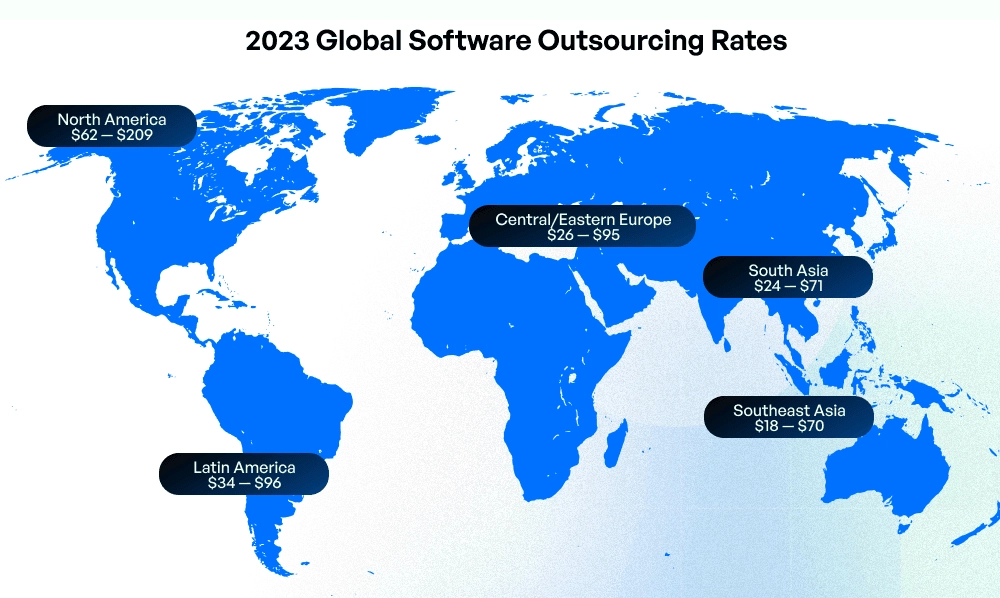
Source: Accelerance
App features
The complexity and number of features you want to include in your wellness app significantly impact the cost. Features like activity tracking, integration with wearable devices, gamification elements, and data analytics tools can all add to the development cost.
Platform selection
Developing an app for multiple platforms (iOS, Android, and web) is generally more expensive than targeting a single platform due to diverse development environments, design considerations, testing across platforms, maintenance challenges, app store approval processes, potential device fragmentation, and the need to address platform-specific features. Despite the increased expenses, the broader audience reach and potential user base often justify the investment for multi-platform development.
Design and user experience
High-quality design and user experience are crucial for user engagement but can also increase costs. Investing in a well-designed interface and user-friendly features is often worth the expense.
Data security and compliance
If your app handles sensitive health data, you must invest in robust data security and compliance measures, which may add to the development cost.
Integration
Integrating the app with other systems, such as HR or benefits systems, may require additional development work and cost.
Maintenance and updates
Ongoing maintenance and updates are also part of the cost. You’ll need to budget for regular app maintenance, bug fixes, and adding new features or improvements.
In general, it’s easier to provide a specific figure for the cost of developing a corporate wellness app if you know the particular requirements and scope. A basic wellness app with limited features might cost around $30,000 to $50,000, while a more complex app with advanced features could exceed $100,000 or even more.
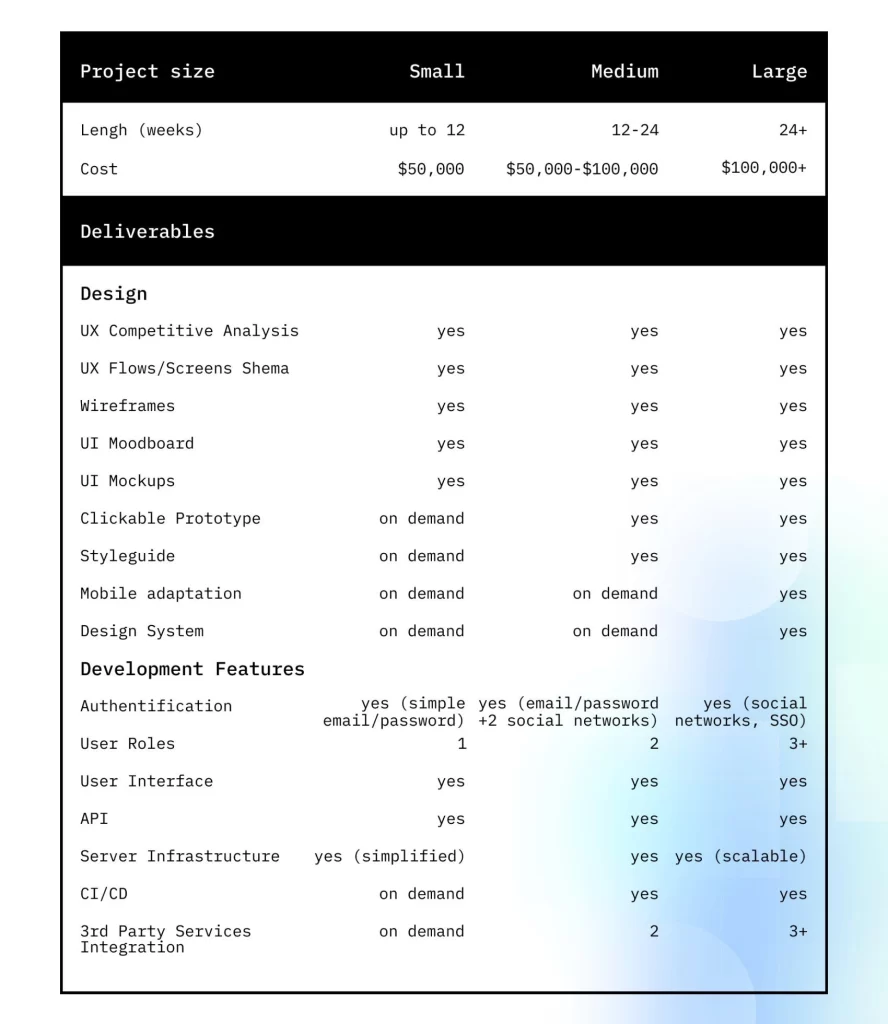
Note: This is only an approximate example of cost. To calculate the final price, we need to know your project requirements, its complexity, the required technologies, and many more determinants.
To get an accurate estimate, contact us, and we provide cost estimates based on your specific needs and goals.
How to Monetize Your Corporate Wellness Software
Monetizing your corporate wellness software can be achieved through various strategies that allow you to generate revenue while providing valuable well-being solutions to organizations. Here are some effective ways to monetize your corporate wellness software:

Subscription model
Offer a subscription-based pricing model where organizations pay a recurring fee for access to your wellness software. Pricing can be based on the number of users or the required features. This model provides a steady stream of revenue.
For example, JSA users, a fitness platform we’ve built, have seven days after registration to test the app; if they like it, they buy a subscription or month block.
Licensing to employers
License your wellness software to employers or organizations on an annual or per-user basis. This allows companies to customize and implement the software within their workforce, and you can charge a fee based on the size of the organization and the level of customization.
White labeling
Offer white-label solutions, allowing other wellness providers or HR companies to rebrand and use your software as part of their wellness offerings. They pay a licensing fee for this service.
Partnerships and integrations
Partner with other wellness or health-related companies to integrate their services or products into your wellness software. This can include fitness equipment, nutritional products, or mental health services. You can earn a commission or fee for each successful integration.
In-app advertising
Incorporate non-intrusive, relevant advertisements within your software. Advertisers pay you for access to your user base. Ensure ads align with the wellness theme to maintain user engagement and trust.
Consultation and coaching services
Provide consulting or coaching services as an additional offering. Employers or individuals seeking personalized guidance can pay for access to health and wellness professionals within the app.
It’s essential to choose a monetization strategy that aligns with your target market, provides value to your users, and supports the sustainability and growth of your corporate wellness software.
Learn more: 12 mobile app monetization strategies to use in 2023
Summing up
In a world where the health and happiness of employees are paramount, corporate wellness software is not just a technological tool but a commitment to nurturing a thriving workforce. The development of such software offers a promising path forward, where businesses can simultaneously enhance their employees’ lives and the bottom line.
For businesses and organizations considering the use of corporate wellness software, it’s crucial to prioritize employee well-being and engage in a thorough evaluation of your needs and objectives.
As a next step, we recommend contacting the Alternative Spaces team for deeper consultation. Our experts can provide tailored insights, guidance, and solutions to help you harness the full potential of corporate wellness software to create a healthier, more productive workforce.
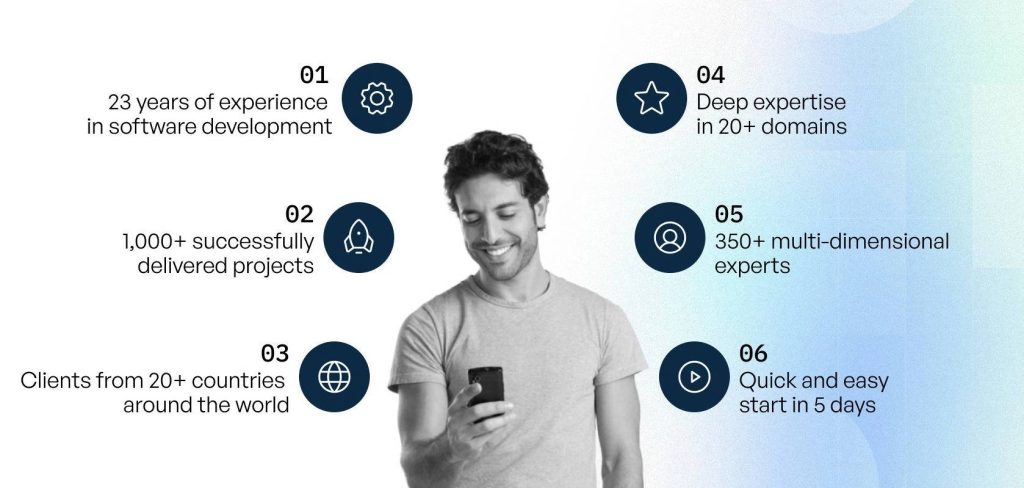
FAQ
- How can businesses ensure the success of their corporate wellness software development project?
To ensure success, businesses should define clear objectives, prioritize user-friendly design, comply with data security and privacy regulations, integrate gamification, and provide access to educational content. Regular maintenance and feedback collection are also crucial.
- How can Alternative Spaces assist businesses in their corporate wellness software development?
Alternative Spaces provides expert guidance and consultation to businesses interested in corporate wellness software development. Our experienced team offers tailored insights, solutions, and support to help organizations harness the full potential of corporate wellness software. Contact our team for more information and assistance.
- Is corporate wellness software suitable for all types and sizes of businesses?
Corporate wellness software can benefit businesses of various sizes and industries. While the specific features and customization may vary, the focus on employee well-being and engagement applies to organizations of all types.
- How can businesses promote employee engagement with their corporate wellness software?
Promoting engagement can be achieved through strategies like wellness challenges, communication tools, rewards and incentives, and ongoing employee education about the software’s features and benefits. It’s essential to involve and motivate employees to participate actively.
- What are the trends in corporate wellness software?
The trends in corporate wellness software include personalization for individual employee needs, a focus on mental health support, gamification for engagement, integration with wearable devices, data analytics for predictive insights, a push to reduce healthcare costs, support for remote and hybrid work environments, integration with Employee Assistance Programs (EAPs), the use of AI and machine learning, heightened attention to legal and compliance aspects, remote health monitoring, and an emphasis on measuring the return on investment (ROI) of wellness programs.
Content created by our partner, Onix-systems.
Source: https://onix-systems.com/blog/corporate-wellness-software-development-guide Home
Home
